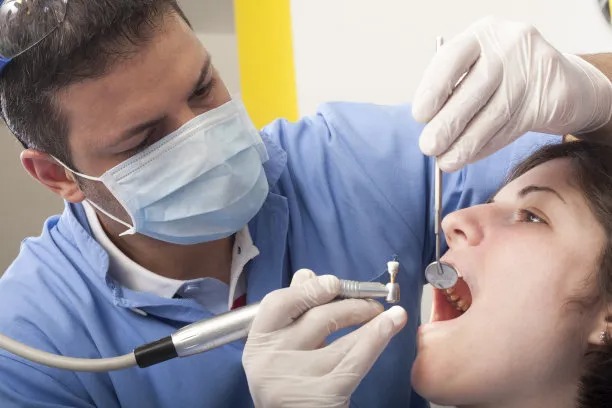The Essential Guide to Safely Extracting a Tooth at Home for Better Dental Health
Summary: This article serves as a comprehensive guide for safely extracting a tooth at home while promoting better dental health. It addresses the reasons why someone might need to extract a tooth, the necessary tools and preparations, step-by-step instructions for the procedure, and post-extraction care. With a focus on safety and effectiveness, the article empowers readers to make informed decisions about their dental health, emphasizing the importance of consulting a professional when in doubt. By understanding the process and implications, individuals can potentially alleviate pain and improve their well-being through knowledge and careful action.
1. Understanding When Tooth Extraction is Necessary

Tooth extraction can be a daunting thought for many, but there are specific circumstances where it becomes necessary. Dental issues such as severe decay, overcrowding, or impacted wisdom teeth often require extraction to prevent further complications. Recognizing these situations is the first step toward making an informed decision regarding your oral health.
In addition to dental decay, gum disease can also lead to the need for tooth extraction. If the supporting structures of the teeth are compromised, it may be necessary to remove the affected tooth to maintain the overall health of the mouth. Understanding the warning signs, such as persistent pain or swelling, helps individuals recognize when professional dental advice is needed.
Lastly, sometimes individuals may face a dental emergency caused by trauma. Accidents or injuries can result in teeth being chipped or knocked out. Knowing when immediate action is required can ultimately save the tooth or mitigate further dental issues, and understanding the urgency of the situation can determine the need for at-home extraction.
2. Preparing for a Safe Tooth Extraction at Home
Preparation is crucial for a safe tooth extraction process at home. Start by gathering the right tools. Essential items include clean gloves, sterile gauze, dental floss, and a proper implement for extraction, like plyers or a similar tool. Ensuring that all tools are sanitized will minimize the risk of infection during the procedure.
Before the extraction, it is essential to assess the level of pain and discomfort. Over-the-counter pain medications can be taken to alleviate discomfort prior to the procedure. Moreover, ensuring a clean and comfortable setting where potential distractions are minimized will also contribute to a smoother extraction experience.
It is also wise to inform someone about your plans to extract a tooth at home. Having a friend or family member present can provide assistance if anything goes wrong. This extra measure not only instills confidence but also adds a layer of safety to the procedure.
3. Step-by-Step Guide to Tooth Extraction
Executing the extraction process requires a methodical approach to ensure safety and effectiveness. Begin by gently rocking the tooth back and forth to loosen it. This maneuver can ease the extraction process, especially if the tooth is not overly decayed or impacted.
Once the tooth is sufficiently loose, carefully grip it with your extraction tool and apply even pressure while gradually pulling outward. This action should be performed with a steady hand; jerking motions can lead to tangles or breakage. Remember to use your other hand to stabilize the surrounding area if necessary.
After the tooth is removed, it is crucial to control any bleeding. Place a sterile gauze over the socket and apply gentle pressure. Maintaining this pressure for 30 minutes can significantly reduce the chance of complications. Always remember to monitor the extraction site for any signs of excessive bleeding or infection.
4. Aftercare Following Tooth Extraction
The aftercare process is vital to ensuring proper healing after a tooth extraction. For the first 24 hours, it is recommended to avoid rinsing the mouth, as doing so can dislodge the blood clot that is essential for healing. Instead, gentle rinsing with warm salt water can help keep the area clean and mitigate the risk of infection.
Diet is another critical aspect of aftercare. Soft foods and plenty of fluids should be consumed to promote healing and avoid irritating the extraction site. It is advisable to steer clear of hot, spicy, or crunchy foods that could hinder recovery.
Monitoring for signs of infection or complications like severe pain or swelling is crucial in post-extraction care. If any unusual symptoms occur, contacting a dental professional is necessary to address potential issues promptly.
Summary: This guide prioritizes safety and awareness when extracting a tooth at home, highlighting why such a procedure might be necessary and outlining essential steps and care post-extraction. It is a call to action for individuals facing dental challenges to educate themselves, but it does not replace professional dental advice, emphasizing the importance of consulting with a dentist for any complex issues.
This article is compiled by Vickong Dental and the content is for reference only.


